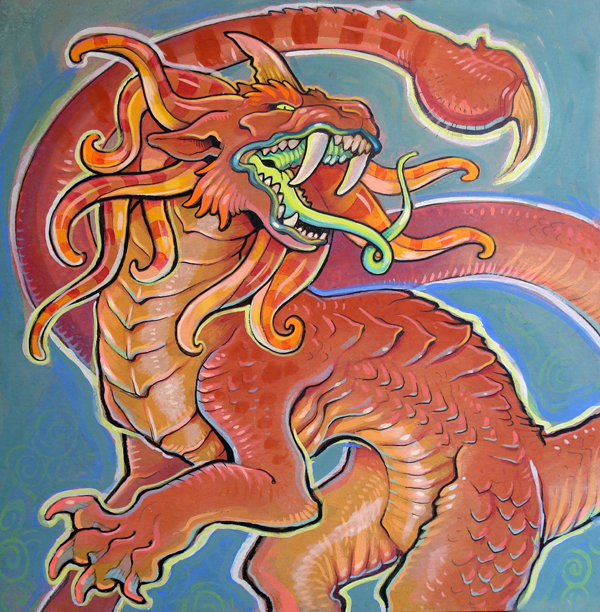BIGFOOT, NESSIE, MOTHMAN, even the dinosaur-like mokele-mbembe have become as familiar to us as wooly mammoths and saber-toothed tigers. The difference is that the first group might still be hanging around out there somewhere.
There are many other crypto-creatures whose names might not be so familiar to you, however. And as we go through our list, you’ll notice that most of them share a trait in common: they have been reported by native tribes in remote, mostly unexplored parts of the world. This fact raises these possibilities as to the reality of their existence:
- They are merely folklore of the tribespeople.
- They are modern-day creatures known to science, but as yet unidentified.
- They are species as yet unknown to science.
- They are species known to science but thought to be extinct, such as creatures from the dinosaur era.
- It’s that last possibility that whets our appetite, of course, because it certainly is feasible that a prehistoric animal could have survived in these dense, tropical areas, protected from human civilization.
The only way to find out which of these possibilities is true for any of these creatures is to mount expeditions to these isolated pockets of jungle and swamp and document evidence. Such expeditions have taken place, in some cases, but came up empty-handed. (Naturally, if they were successful, these creatures wouldn’t be listed in 5 Monsters You Never Heard Of – they’d be big news.)
BURU
If it existed at all, this swamp-dwelling monster may have only recently died out. Local tribes of the Apa Tani Valley and the Jiro Valley in northern Assam, India, claimed to have seen this large, crocodile-like monster many times over the years. They described it as measuring between 11 and 13 feet long with a long snout, four limbs, and 5-foot-long tail. Unlike a crocodile, however, the buru did not have scales, but rather was smooth with blue and white coloration. Natives testified that it would occasionally lift its head out of the water and let out a bellow that could be heard over great distances.

After many run-ins with the creature, the natives deliberately set out to destroy the creature by draining its swamp habitat. The last one may have died sometime in the early 1940s, although some natives believe it only retreated underground. An expedition sponsored by London’s Daily Mail in 1948 proved fruitless, although it came away convinced that the natives were quite sincere in their belief in its existence.
Cryptozoologist Dr. Karl Shukar, after examining all the available evidence, surmised that the buru might have been a species of giant lungfish.
DINGONEK
A walrus-like creature in the heart of Africa? Such is the description of the dingonek by John Alfred Jordan, an explorer who actually shot at this unidentified monster in the River Maggori in Kenya in 1907. Jordan claimed this scale-covered creature was a big as 18 feet long and had reptilian claws, a spotted back, long tail, and a big head out of which grew large, curved, walrus-like tusks.

Natives of the area further described it as having a scorpion-like tail and reported that it would kill any hippos, crocodiles, or human fisherman that dared encroach on its territory.
This sounds like a fantasy creature, but consider this: At the Brackfontein Ridge in South Africa is a cave painting of an unknown creature that fits the description of the dingonek, right down to its walrus-like tusks.
EMELA-NTOUKA
Emela-ntouka literally means “elephant killer,” aptly named by natives of the Republic of Congo who have seen this swamp-dwelling monster attack and disembowel elephants that cross its path. The instrument of this disembowelment is a large, ivory or bone horn on the animal’s head, leading to speculation that the emela-ntoouka might be a surviving relative of the triceratops or styracosaurus.

This is a nasty, vicious creature, according to the natives, who further described it as having a red-brown color, massive legs, and the ability to hide totally submerged beneath the water. Interestingly, its attack on elephants seems only to be defensive or territorial, since the monsters don’t eat the elephants. They seem to be plant-eaters.
KONGAMATO
Pterodactyl-like flying monsters are said to have been sighted in modern-day Southwestern United States. The kongamato is the African version of this dinosaur-era holdover, reportedly seen in Zambia and Zimbabwe. Although not as large as pterodactyls known from fossils – 4- to 7-foot wingspans compared to as large as 33-foot wingspans – the kongamato resembles the prehistoric creature in virtually every other respect: a long, tapered jaw filled with sharp teeth, bat-like membranous wings, and an overall lizard-like appearance.

Some researchers think the kongamato could in fact be a large species of bat. However, in 1923, explorer Frank Melland heard of this creature while traveling through Zambia. Intrigued, he showed illustrations of a pterodactyl to the locals, and "every native present immediately and unhesitatingly picked out and identified it as a kongamato."
MINHOCÃO
Let us leave the African continent now and travel to South America, where there have been reports not of a dinosaur-like creature but (perhaps more disturbingly) of a giant worm. Witnesses in Uruguay and southern Brazil describe the monster as looking like a gigantic armor-plated slug. Imagine a black slug as big as 14 feet long with a snout like a pig’s and two tentacles poking out of its head. Some reports have it as long as 75 feet! Normally living underground, the minhocão occasionally surfaces, leaving deep trenched in its wake.

Most scientists think its length has been exaggerated and suggest that the minhocão could either be: an unknown species of horned viper; a glyptodont, a giant relative of the armadillo, thought to be extinct; or an outsized caecilian, a subterranean worm-like amphibian.
Those are good guesses. But we know what the minhocão really is. Like the other creatures profiled in this article, they are the living, breathing monsters that hide in the damp, dark shadowy corners of our planet.
0 comments:
Post a Comment